Custom color printed...
Discussion on the printing process and characteristics of tin cans
In order to maintain the original quality of various foods, in 1819, American Underwood opened the first tinplate canning factory in Boston. They cut the tinplate into a certain shape and welded it into cylinders by craftsmen. Welded round bottom, with a hole at the top, put the food can into the tube, this is the original tinplate packaging. Over time, people print patterns on tinplate, which makes tinplate metal cans not only play a role in keeping food fresh, but also have a decorative appearance, which can attract customers' attention.
Tin-plated cold-rolled thin steel plate is a high-quality low-carbon (carbon content <0.13%) thin steel plate coated with a very thin layer of tin (0.10-0.15um) metal material, also known as tinplate. It consists of five layers: steel substrate 1, tin-iron alloy layer 2, tin layer 3, tin oxide film 4 and oil film 5 (as shown in Figure 1). Tinplate printing is often referred to as tinplate printing. After printing, tinplate can be made into containers of various specifications, such as barrels, cans, crown caps, etc. Through welding, sealing or stamping, it can be used in the packaging of canned food, petrochemicals, tea, chocolate, electronic products, signs and other commodities and toy manufacturing industries.
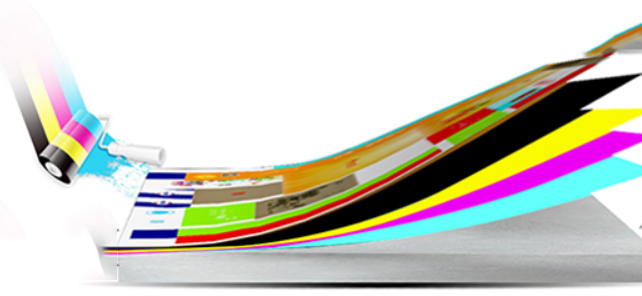
Tinplate printing technology usually completes operations on the printing iron production line according to the above process flow. The printing iron production line is generally composed of a feeding device, an offset printing press unit, a coating unit, a drying chamber and a winder. The technological characteristics and requirements of each process are as follows
1. Internal coating
For packaging containers made of tinplate, according to the characteristics of the content, it is usually necessary to apply a certain coating on the inner surface of the container to prevent the content from corroding the tank wall and contaminating the content, which is conducive to long-term storage. For candy boxes, in order to prevent post-processing curling, exposed iron scratches and rust, a decorative coating should also be applied to improve the appearance. The performance of the coating in canned food should not only have corrosion resistance, good adhesion, flexibility, non-toxic and tasteless, meet food hygiene and safety requirements, but also have high-frequency resistance welding heating, internal coating local high-temperature heating, After canning, it has the performance of 121℃ high temperature cooking without fading and gloss. Generally, the interior is coated with phenolic resin paint, epoxy phenolic resin paint, acrylic resin paint and aluminum powder paint. Generally, the type and thickness of the undercoat layer are selected according to the characteristics of the content.
Second, use base oil and printed white
Tinplate canned products are usually printed after canning, and canning requires bending, stretching, welding, flanging, rolling and other processes, so the dry coating film and ink layer are required to have sufficient strength and sufficient adhesion. In order to avoid deformation, cracking or even falling off of the tinplate during the process of forming. Because the adhesion between the ink and the tinplate is not ideal, it is necessary to do so.
The base oil has vinyl, modified vinyl, epoxy-amino groups, and the performance requirements are as follows:
1. Good transparency, yellowing becomes smaller after drying and film formation, and cannot cover metal texture.
2. Has good leveling, thermosetting and softness.
3. It has sufficient affinity for ink and good adhesion to various types of iron sheet.
Because base oils are mostly low-molecular compounds, it is easy to dry and form a film
Influenced by additives in other coatings covering him, it reduces its physical and chemical properties (adhesion, yellowing), so it should match the varnish.
According to layout requirements, sometimes white painting cannot be used, but white printing can be used. Compared with white printing, white painting has the following advantages:
1. After the emodin coating, it is not easy to turn yellow after several drying rooms.
2. The coating thickness of white butadiene is 3-4 times thicker than that of white ink, which has better whiteness and fullness than white ink, and is smooth and smooth with sufficient gloss.
3. Because the film-forming substances in benzodiazepines are usually high polymers, they can resist the corrosion of various varnishes.
Depending on the film-forming substance, there are acrylic and polyester. Polyester has good bending properties, and can be directly used in various cans, acrylic high-temperature cooking, food cans and other products that require high-temperature cooking.
3. Plate making:
The plate making of tinplate is the same as other plate making methods, and there are special requirements for the printing characteristics of tinplate:
1. In tin printing, due to the non-absorbability of the tin plate and the hardness of the tin plate, the deformation of the dots during the printing process is more obvious than the deformation of the paper, especially in the dark and mid-tone areas. Due to the deformation of the dots, the halftone jumps deeper, and the dark tone changes rapidly. The use of square dots is more obvious, and the diamond dots or round dots alleviate the mutation of the halftone. Therefore, all printed iron plate-making dots choose round dots or diamond dots.
2. After tinplate printing, it needs to be processed and formed. Therefore, the welding edge and other reserved processing parts should be reserved during plate making to ensure that the characters and patterns do not deviate from the center after processing and molding.
3. All welding products, such as the seam of the printing plate of the plastic spray tank, must not have graphics, different color points, etc. To meet the needs of subsequent welding.
4. Printing:
Tinplate can be printed on the machine after inner and outer coating. Since tinplate has a smooth surface, does not absorb ink, and has a certain hardness and thickness, offset printing is generally used for tinplate printing. Its printing principles are: oil and water incompatibility, dot shape and color formation, and selective adsorption. Tinplate offset printing is basically the same as sheet-fed offset printing, but due to the special nature of tinplate, tinplate printing is also different from ordinary offset printing, mainly in the following aspects.
1. Printing color
a. Four-color printing, four-color CMYK, namely blue, red, yellow and black inks. Four colors do not need to adjust the original ink, according to
With different ratios, the four colors can print almost all colors.
Spot color: A specific color specified according to the color number (Pantone number) provided by the customer. Spot color refers to a specific ink used to print the color when printing, rather than printing C, M, Y , K (C. Cyan M. Magenta Y. Yellow K. Black) Four colors synthesize this color. Spot inks are pre-mixed by printing plants or produced by ink plants. The use of spot colors can make the colors more accurate, and is suitable for products with high printing requirements and wide monochrome range
2. Printing ink:
a) Dryness and heat resistance of ink. The solidification of tinplate ink should be heated and dried, so it is required that the heated white ink does not change and does not yellow, the color ink does not fade or change color, and the varnish does not lose luster. Tinplate ink is generally cured at 150 ℃ for 10-12 minutes, but usually in post-processing such as varnish baking and high-frequency resistance welding, inner coating and inner full spray baking, the temperature should reach 180-222.
b) Solvent resistance. After printing, the varnish contains various solvents. In order to prevent bleeding during glossing, the ink should have good solvent resistance.
c) Cooking resistance
Gender: Containers filled with food should be sterilized at high temperature. Therefore, it is required that the printing ink shall not bleed out, fade, soften and fall off due to wet steam.
d) Work resistance. Most printed iron products have to go through the processes of stamping, punching, bending, flanging, rolling, etc. Therefore, the ink layer on the surface of the printed iron should have a strong structure, and the printed iron ink should have good adhesion, flexibility, surface hardness and Impact strength.
e) Light resistance and weather resistance. All kinds of daily necessities generally need to be stored for a long time, so the ink should not be faded and aging due to light or climate factors.
f) The ink layer does not contain heavy metals. Many printed iron products such as toy boxes, chess boxes, battery shells and other exported products, the heavy metal content in the ink should also meet the corresponding standards of the United States, Japan, and the European Union.
2. Varnish
Varnish is a transparent oil with no color. It is transparent and bright. After baking at a high temperature of 175 degrees, the surface of the iron sheet will be visually yellowed. To complete all printing tin prints, they must be covered with a layer of bright oil to increase the surface gloss and scratch resistance of the printed matter, while increasing the hardness and printing. The surface coating has certain flexibility and corrosion resistance. Varnish should have the following characteristics:
a) Good color retention, the solvent in the varnish will not make the ink bleed and fade.
It has enough hardness and firmness to withstand the processing deformation of subsequent processes.
c) Match with white paint or base oil, not corrode white paint or base oil.
In order to improve production efficiency and save energy, the last printing process is generally combined with the varnishing process. In addition to roller coating, the method of printing bright ink can also be used. There is not much difference in gloss between them, but the process resistance is not as good as roller coating. In addition to varnish, varnish also includes matte oil, anti-wrinkle oil and pearl varnish. The varnish achieves a high-gloss effect, which conforms to people's traditional aesthetic habits. On the other hand, matte oil can darken the surface of printed iron products, with paper texture and elegant decorative effect. After being coated with wrinkle oil, it forms a crystal-like transparent scale, and the reflection of light makes the exquisite patterns printed on the tinplate full of three-dimensional sense, and it has high artistic appreciation value from different angles. Pearl varnish is used on a large area of white pages, has a pearl-like luster, sets off the splendor and brightness of printed graphics, and has a high aesthetic value.
3. Drying process and requirements
All paints and inks need to be dried. The drying process is determined by the following three parameters: a, the set temperature of the oven; b, the time to maintain the peak temperature.
The drying room is usually composed of three parts: heating zone, constant temperature zone and cooling zone. The main function of the heating zone is to raise the iron plate from room temperature to the set temperature, and the main function of the constant temperature zone is to maintain the temperature reached by the heating zone. Cooling zone
Leave a comment
Comments
-
Loved it!!
By: Sapin Packaging Solutions On 01/28/2022Really Enjoyed Reading the benefits of Tin/ Metal Packaging Cans. One of the most but least favorite Advantages of Metal cans is Durability and Sustainability, That Makes Cans Reusable and Recyclable. Would love to know more about Metal Food Packaging Cans.
https://sapin.com.sa/

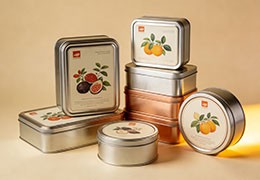

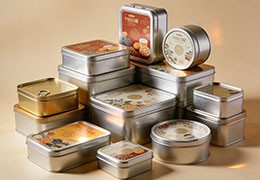
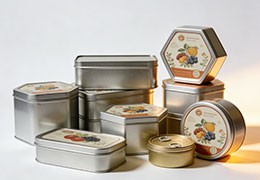
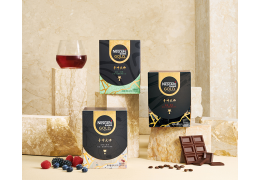
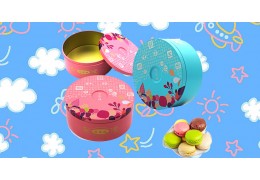
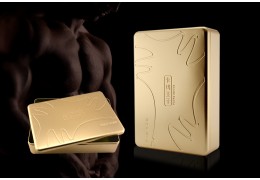
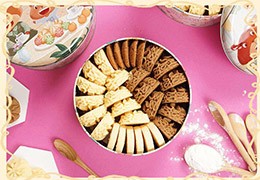
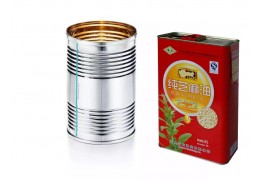

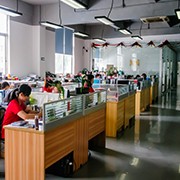


Latest comments